Old Browser
This page has been recently translated and is available in French now.
Looks like you're visiting us from {countryName}.
Would you like to stay on the current country site or be switched to your country?


.png)

Multicolor flow cytometric analysis of Foxp3 expression in mouse splenocytes. C57BL/6 mouse spleen cells were treated with BD Pharm Lyse™ Lysing Buffer (Cat. No. 555899) to lyse erythrocytes. The leucocytes were washed, fixed and permeabilized using the Transcription Factor Buffer Set (Cat. No. 562574/562725). The cells were then stained with BD Horizon™ BV421 Rat Anti-Mouse CD4 antibody (Cat. No. 562891), APC Rat Anti-Mouse CD25 antibody (Cat. No. 557192) and either PE Mouse IgG1, κ Isotype Control (Cat. No. 554680; Top Plots) or PE Mouse Anti-Foxp3 antibody (Cat. No. 566881; Bottom plots) at 0.125 µg/test. Left Plots: Two-color flow cytometric dot plots showing the correlated expression of CD4 versus Foxp3 (or Ig Isotype control staining) were derived from gated events with the forward and side light-scatter characteristics of intact cells. Right Plots: Two-color flow cytometric dot plots showing the correlated expression of Foxp3 (or Ig Isotype control staining) versus CD25 were derived from CD4 positive-gated events with the light-scatter characteristics of intact cells. Flow cytometric analysis was performed using a BD LSRFortessa™ X-20 Flow Cytometer System and FlowJo™ software. Data shown on this Technical Data Sheet are not lot specific.
.png)

BD Pharmingen™ PE Mouse Anti-Mouse Foxp3
.png)
Regulatory Status Legend
Any use of products other than the permitted use without the express written authorization of Becton, Dickinson and Company is strictly prohibited.
Preparation And Storage
Product Notices
- Since applications vary, each investigator should titrate the reagent to obtain optimal results.
- An isotype control should be used at the same concentration as the antibody of interest.
- Caution: Sodium azide yields highly toxic hydrazoic acid under acidic conditions. Dilute azide compounds in running water before discarding to avoid accumulation of potentially explosive deposits in plumbing.
- For fluorochrome spectra and suitable instrument settings, please refer to our Multicolor Flow Cytometry web page at www.bdbiosciences.com/colors.
- Please refer to http://regdocs.bd.com to access safety data sheets (SDS).
- Please refer to www.bdbiosciences.com/us/s/resources for technical protocols.
Companion Products
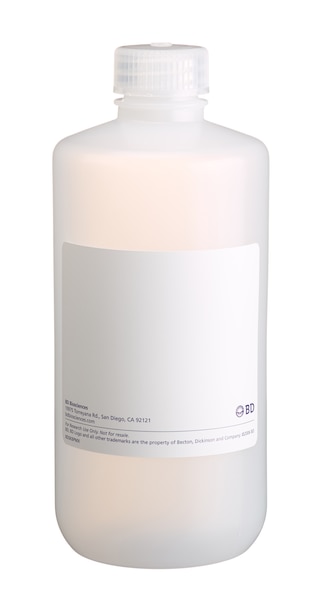
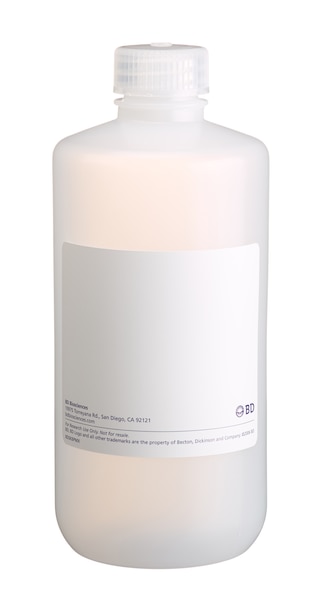
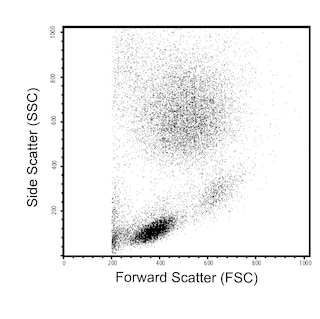
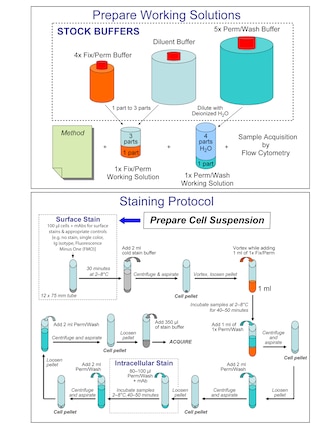
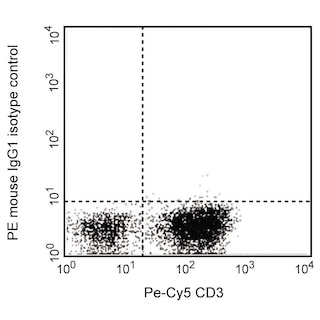
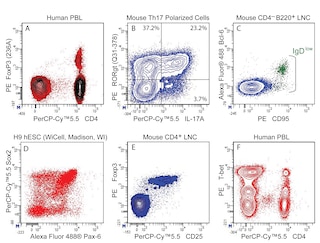
The 3G3 monoclonal antibody specifically binds to Forkhead box protein P3 (Foxp3) which is also known as Scurfin and JM2. Foxp3 is a 50-55 kDa protein that is encoded by Foxp3 (forkhead box P3) which belongs to the forkhead/winged helix family of transcriptional regulators. FoxP3 contains a single C2H2-type zinc-finger motif, a leucine-zipper region, and a C-terminal forkhead DNA-binding domain. Foxp3 is expressed by natural (nTreg) and induced/adaptive (iTreg) T regulatory cells. Foxp3 is a key transcription factor for Treg cell development and regulatory function. Treg cells play crucial roles in maintaining immune homeostasis by enforcing immunological tolerance to self-antigens and by suppressing excessive responses made by other immune cells to foreign antigens. Ectopic expression of Foxp3 in conventional T cells is sufficient to induce suppressive activity, repress the production of cytokines such as IL2 and IFN-γ, and upregulate Treg cell-associated molecules such as CTLA4/CD152 and GITR/TNFRSF18. A mutation in Foxp3 causes a lack of functional Tregs in Scurfy (sf) mice which develop a systemic disease state with autoimmune manifestations. The 3G3 antibody reportedly binds to the N-terminus of Foxp3.

Development References (5)
-
Brunkow ME, Jeffery EW, Hjerrild KA, et al. Disruption of a new forkhead/winged-helix protein, scurfin, results in the fatal lymphoproliferative disorder of the scurfy mouse. Nat Genet. 2001; 27(1):68-73. (Biology). View Reference
-
Gavin MA, Torgerson TR, Houston E, et al. Single-cell analysis of normal and FOXP3-mutant human T cells: FOXP3 expression without regulatory T cell development. Proc Natl Acad Sci U S A. 2006; 103(17):6659-6664. (Immunogen: Flow cytometry). View Reference
-
Hadaschik EN, Wei X, Leiss H, et al. Regulatory T cell-deficient scurfy mice develop systemic autoimmune features resembling lupus-like disease. Arthritis Res Ther. 2015; 17(35):1-12. (Biology). View Reference
-
Law JP, Hirschkorn DF, Owen RE, Biswas HH, Norris PJ, Lanteri MC. The importance of Foxp3 antibody and fixation/permeabilization buffer combinations in identifying CD4+CD25+Foxp3+ regulatory T cells. Cytometry A. 2009; 75(12):1040-1050. (Clone-specific: Flow cytometry). View Reference
-
Mailer RKW. Alternative Splicing of FOXP3-Virtue and Vice. Front Immunol. 2018; 9(530):1-11. (Clone-specific). View Reference
Please refer to Support Documents for Quality Certificates
Global - Refer to manufacturer's instructions for use and related User Manuals and Technical data sheets before using this products as described
Comparisons, where applicable, are made against older BD Technology, manual methods or are general performance claims. Comparisons are not made against non-BD technologies, unless otherwise noted.
For Research Use Only. Not for use in diagnostic or therapeutic procedures.
Report a Site Issue
This form is intended to help us improve our website experience. For other support, please visit our Contact Us page.